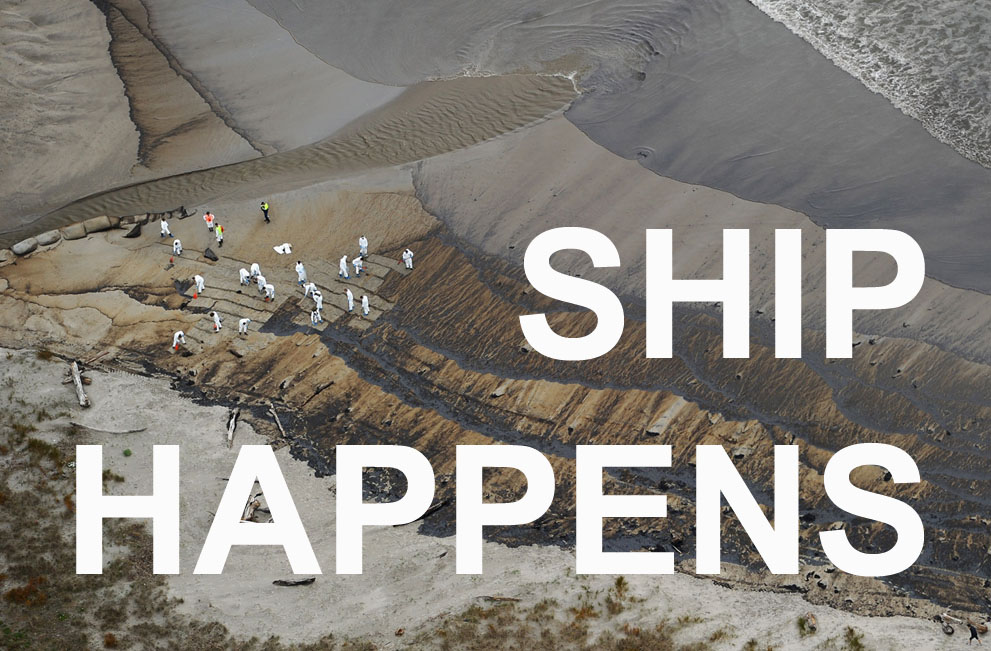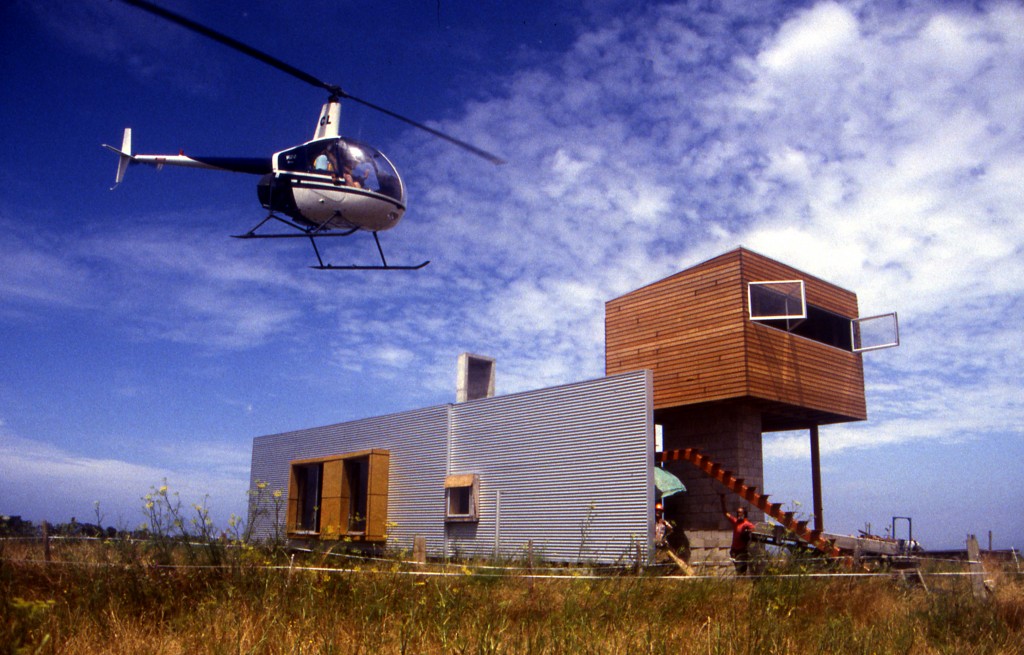000mot_Someone built a house on the runway!
Building as a political act has been, historically, a legitimate means of architectural expression. blablablarchitecture recognises ‘talking through building’ as a form of media communication.
Someone has built a structure, presumably a house, on the komiti minuted, CAA NZ guided, Google map recognised airstrip on Motiti Island.
Granted this does not have the grandeur resonance say against the proposed planning of a third runway for Heathrow, but this simple timber frame structure is nonetheless a highly provocative protest placard. The structure, presumably a house given the skeletal timber frame seems compliant with NZS3604, has rather been deliberately been placed on the runway on Motiti Island. Yet by building this stealth structure over the course of a public holiday (Easter), planning barristers in NZ comment that they are ‘gob smacked’. The runway is now out of use. In doing so, the umbilical chord of the flight path is severed and thus some islanders are now stranded on the mainland, awaiting a clear landing path post-injunction.

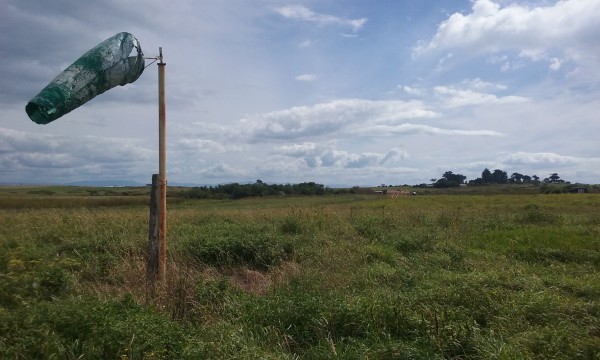
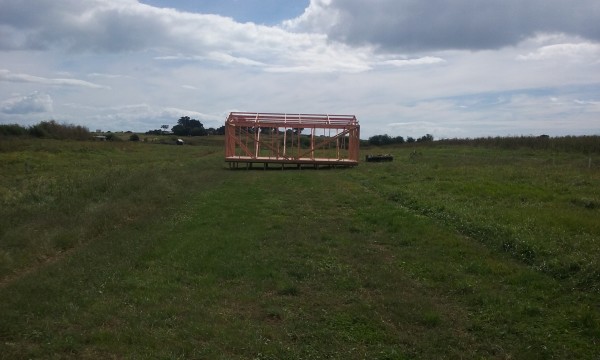
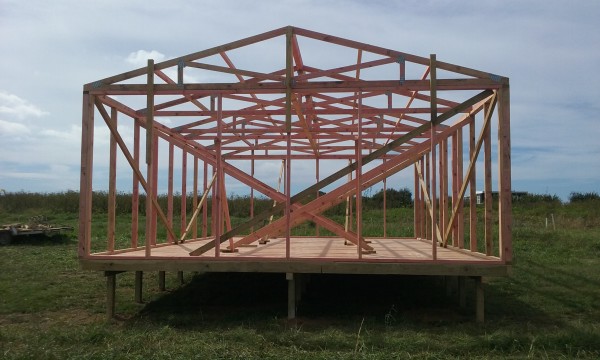





000mot_Rena breaks apart
14 weeks after running aground on the Astrolabe Reef near Tauranga, the cargo ship split in two on Saturday night. The smaller of the two pieces, the bow, remains wedged firmly on the reef. The stern has, for the most part, slipped beneath the waves, with only about a quarter of it above the waterline. Aerial observation flights and a visit by boat to the Rena by salvage experts today confirm no change to the state of the wreck. Maritime New Zealand said the current sea state, combined with the dangerous state of the wreck, is preventing dive operations at this stage but the swells are expected to ease over the next few days…
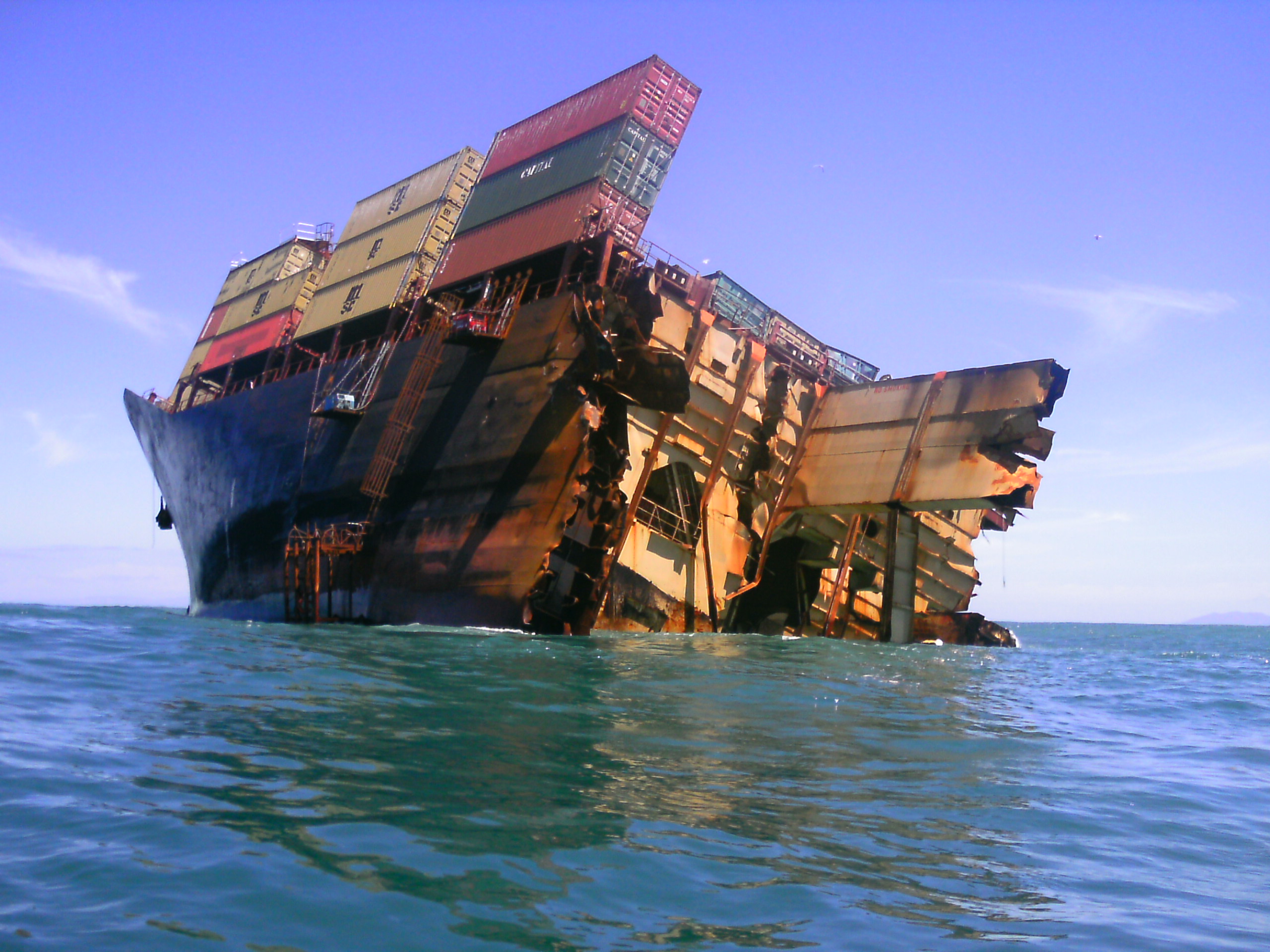
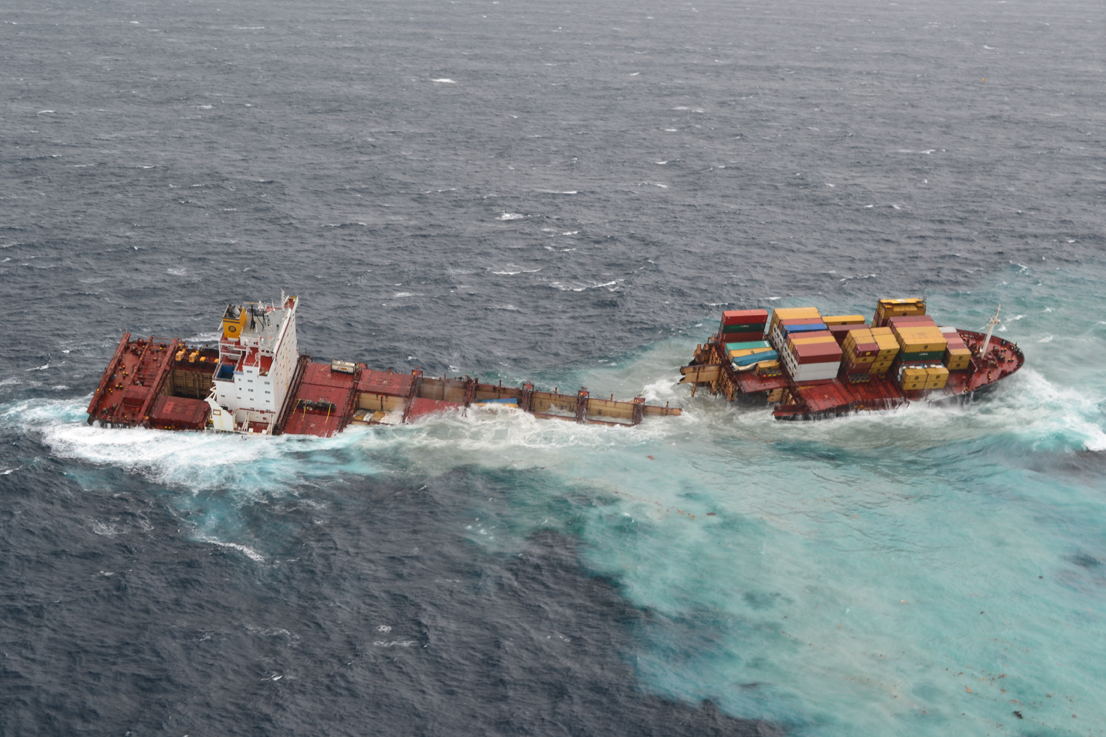



000mot_From the All Blacks to the All Black.
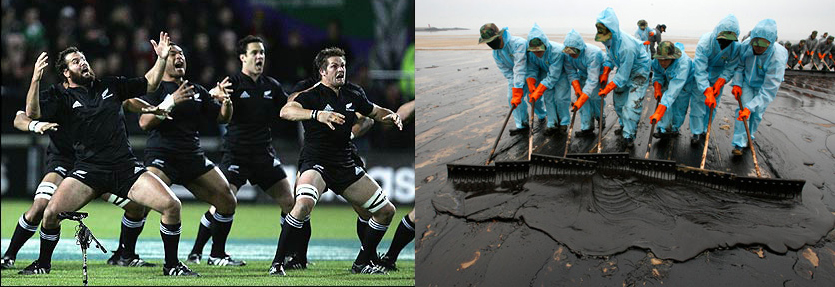 There are two events simultaneously occurring in New Zealand this weekend that will drastically affect the country’s immediate future with potentially disastrous outcomes. In the country’s largest city, Auckland, the All Blacks play Les Bleus in the final of the 2011 Rugby World Cup. Meanwhile next to one of the country’s smallest communities, Motiti Island, the Liberian-flagged Greek-owned Filipino-crewed 47,000 tonne cargo ship Rena threatens to dump 1,700 tonnes of oil and other contaminants into the sea having grounded next to the island on Astrolabe reef.
The significance of the All Blacks to New Zealanders is all pervasive. For the opening game of the RWC 2011, 1,635,780 people watched live broadcasts of the opening match between Tonga and the All Blacks. This, in a country with a population of just over 4 million! An All Black loss to the French would break-up the team currently ranked best in the world according to the International Rugby Board and most certainly lead to anything but ‘There Is No Depression in New Zealand’.
The bigger loss, however, in all senses of the word is not on land but in the sea. The breaking-up of the Rena has now been forecast to happen… but if it doesn’t, well, it could really be deliberately sunk for diving tourism? The massive economic and environmental cost to the country is currently unknown but is likely to dwarf that of hosting the RWC2011. The tournament costs around £155million but generates £140million in ticket sales and leaves the taxpayer with just a £15million deficit. I say ‘just’ because the economic cost of the Rena breaking is currently unknown but oil-clean up operations are catastrophic: they start in the hundreds of millions and end in the billions in whatever currency such is their financial abstraction in terms of multiple 000,000s. Compare these costs then with the paltry maximum fine then imposed on the captain of £5,000, the pathetic Resource Management Act penalty of £300,000 and the insufficient capped insurance of the ship’s owners of £7million with our own office requirements: WHAT_architecture holds £10million cover in Public Liability Insurance! Whatever delusions we hold as architects, are we really likely to destroy the landscape more than a ship owner? In terms of liability, the business of ship owning today operates like a floating sweatshop.
The impact of Rena’s black oil on Motiti Island is also on a different level to that of the mainland NZ. For the permanent residents, kaimoana (seafood) from Motiti’s rocky coast is a part of the household larder and now the sea as supermarket has gone. Furthermore all water supplies normally rainwater harvested have been declared toxic so water is now being flown in by helicopter monsoon buckets not just for drinking and cooking but also to wash. The irony is that for the Motiti islanders, and Maori in general, the canoe is beginning of identity. The tracing of whakapapa (genealogy) provides the basis for establishing, enhancing and challenging relationships between individuals and starts with whanau (family) and then onto hapu (community), iwi (regional tribes) and finally leads to waka (canoe), sea-carrying vessels that brought Maori and their supplies from Hawaiiki to New Zealand. That from the sea can also be that which takes it away. Whatever the outcomes, the future will be all black.
There are two events simultaneously occurring in New Zealand this weekend that will drastically affect the country’s immediate future with potentially disastrous outcomes. In the country’s largest city, Auckland, the All Blacks play Les Bleus in the final of the 2011 Rugby World Cup. Meanwhile next to one of the country’s smallest communities, Motiti Island, the Liberian-flagged Greek-owned Filipino-crewed 47,000 tonne cargo ship Rena threatens to dump 1,700 tonnes of oil and other contaminants into the sea having grounded next to the island on Astrolabe reef.
The significance of the All Blacks to New Zealanders is all pervasive. For the opening game of the RWC 2011, 1,635,780 people watched live broadcasts of the opening match between Tonga and the All Blacks. This, in a country with a population of just over 4 million! An All Black loss to the French would break-up the team currently ranked best in the world according to the International Rugby Board and most certainly lead to anything but ‘There Is No Depression in New Zealand’.
The bigger loss, however, in all senses of the word is not on land but in the sea. The breaking-up of the Rena has now been forecast to happen… but if it doesn’t, well, it could really be deliberately sunk for diving tourism? The massive economic and environmental cost to the country is currently unknown but is likely to dwarf that of hosting the RWC2011. The tournament costs around £155million but generates £140million in ticket sales and leaves the taxpayer with just a £15million deficit. I say ‘just’ because the economic cost of the Rena breaking is currently unknown but oil-clean up operations are catastrophic: they start in the hundreds of millions and end in the billions in whatever currency such is their financial abstraction in terms of multiple 000,000s. Compare these costs then with the paltry maximum fine then imposed on the captain of £5,000, the pathetic Resource Management Act penalty of £300,000 and the insufficient capped insurance of the ship’s owners of £7million with our own office requirements: WHAT_architecture holds £10million cover in Public Liability Insurance! Whatever delusions we hold as architects, are we really likely to destroy the landscape more than a ship owner? In terms of liability, the business of ship owning today operates like a floating sweatshop.
The impact of Rena’s black oil on Motiti Island is also on a different level to that of the mainland NZ. For the permanent residents, kaimoana (seafood) from Motiti’s rocky coast is a part of the household larder and now the sea as supermarket has gone. Furthermore all water supplies normally rainwater harvested have been declared toxic so water is now being flown in by helicopter monsoon buckets not just for drinking and cooking but also to wash. The irony is that for the Motiti islanders, and Maori in general, the canoe is beginning of identity. The tracing of whakapapa (genealogy) provides the basis for establishing, enhancing and challenging relationships between individuals and starts with whanau (family) and then onto hapu (community), iwi (regional tribes) and finally leads to waka (canoe), sea-carrying vessels that brought Maori and their supplies from Hawaiiki to New Zealand. That from the sea can also be that which takes it away. Whatever the outcomes, the future will be all black.
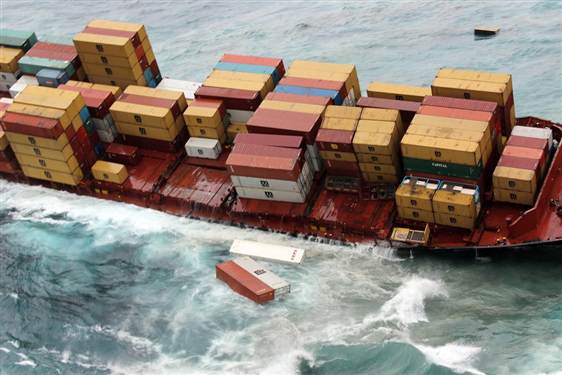
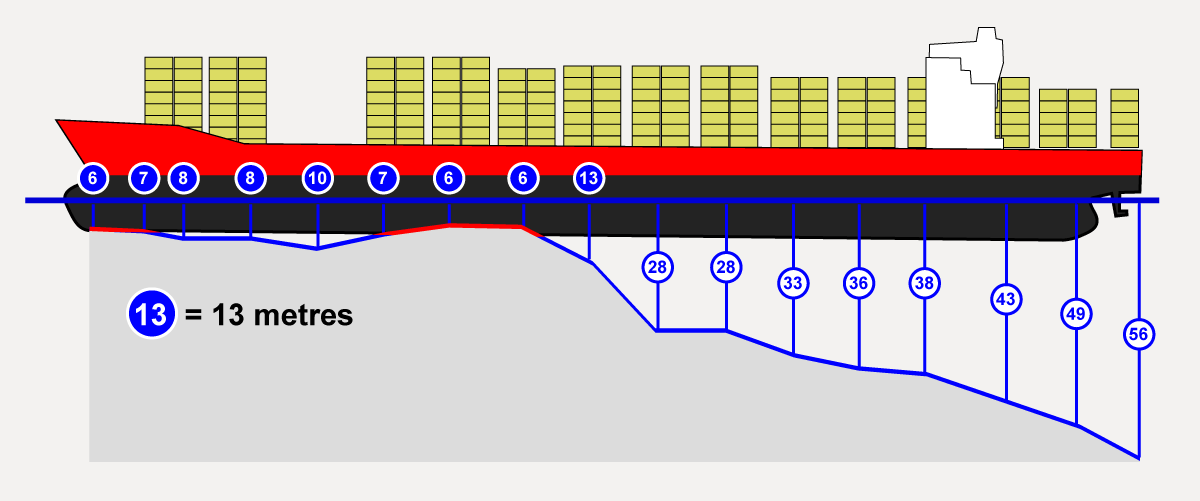
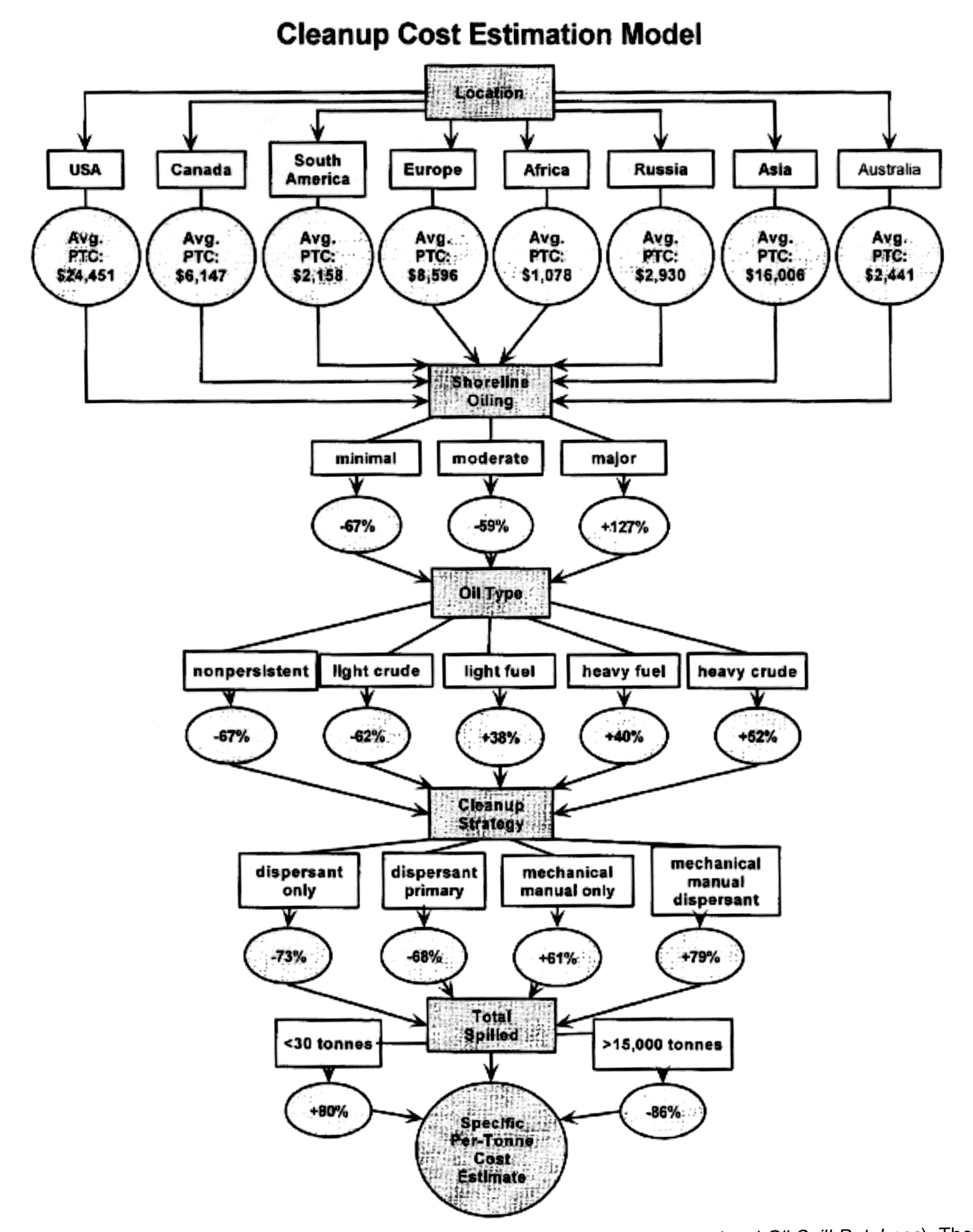

000mot_Te Whare Maori
WHARE MĀORI
A thirteen part documentary series screening on Māori Television from Sunday, 8 May @ 8pm. Presented by Rau Hoskins (Ngā Puhi) a lecturer in Māori Architecture at Auckland’s Unitec and the Director of Design Tribe Architects, Whare Māori is an exciting new television series dedicated to exploring the unique history of Māori architecture as well as current and future trends… and features the WHAT_House On Motiti!
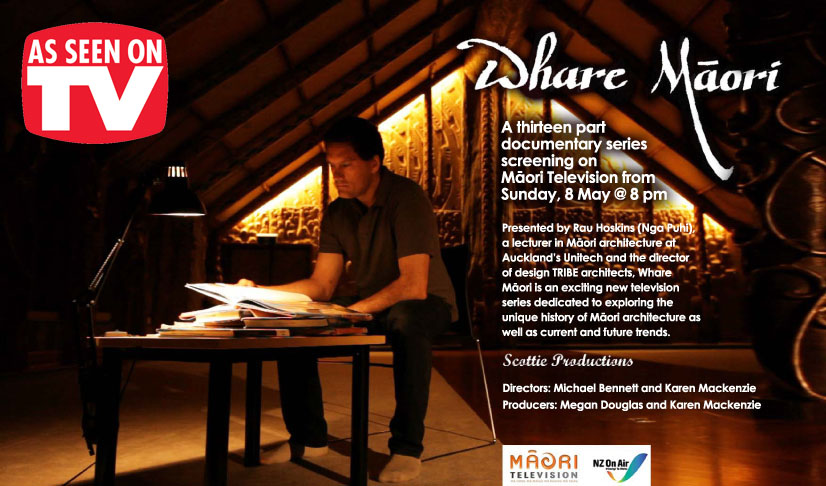


000mot_Māori Television and The House On Motiti
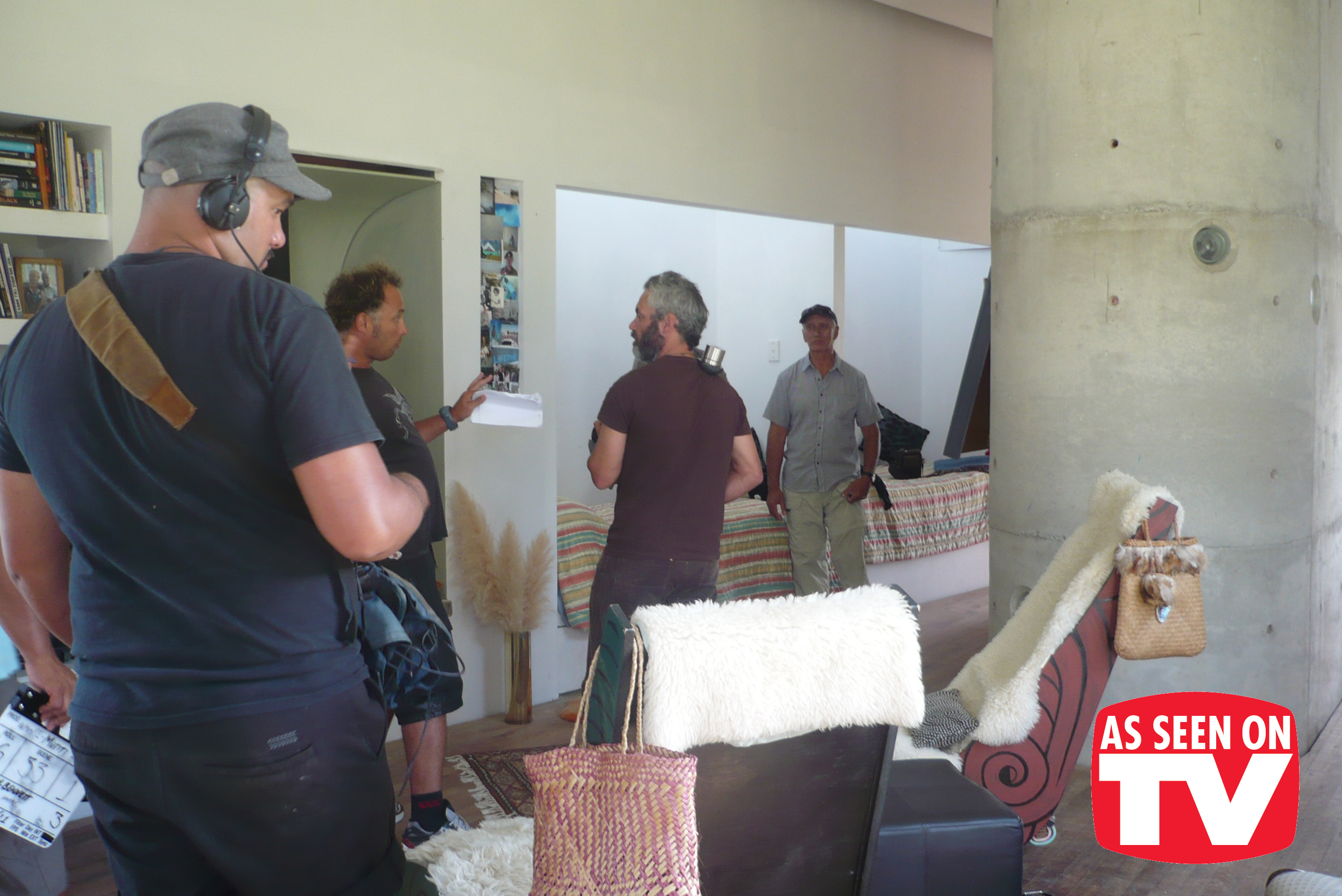 Whare Māori: A thirteen part documentary series for Māori Television
From the time of the arrival of our tupuna over forty generations ago Māori have had a unique architectural history. Whare Māori is an exciting new television series dedicated to exploring this history. Delving into the stories of the people that worked together to create buildings where whanau and hapu could celebrate and worship, learn and govern. Presenter Rau Hoskins (Nga Puhi), a lecturer in Māori architecture and the director of design TRIBE architects will be our guide on this journey around the country, exploring the rich history of Māori architecture along with current and future trends. Rau has an extensive knowledge of traditional construction methods and concerns and in his own work fuses the modern with the traditional. The series will engage our audience through its grass roots approach, embracing the stories and kōrero of the people behind the buildings. We’ll talk to locals who have lived with or around the buildings, others who have had significant ties to the building through their own input or the input of their tupuna.
Each episode of the series will explore a theme that sees buildings linked by how they’re used. The themes we will use to group buildings will include Places of Worship and Political Movements, Marae and Meeting Houses, the Places Where We Live, Places of Learning and Places of the Future. Through these themes we will cover the whole country from Bluff to Te Hapua. As a subject that has largely been ignored – until recently – this series will look at what exactly constitutes “Māori” architecture, and the common ideas that underpin many of our buildings. It will also look at how traditional Māori design principles can be at the forefront of contemporary buildings and be part of a uniquely Aotearoa architecture. Whare Māori will be of significant historical importance, providing an overview of Māori architecture, the social conditions that contributed to this architectural development, and the personal stories that lie at the heart of every building.
Whare Māori: A thirteen part documentary series for Māori Television
From the time of the arrival of our tupuna over forty generations ago Māori have had a unique architectural history. Whare Māori is an exciting new television series dedicated to exploring this history. Delving into the stories of the people that worked together to create buildings where whanau and hapu could celebrate and worship, learn and govern. Presenter Rau Hoskins (Nga Puhi), a lecturer in Māori architecture and the director of design TRIBE architects will be our guide on this journey around the country, exploring the rich history of Māori architecture along with current and future trends. Rau has an extensive knowledge of traditional construction methods and concerns and in his own work fuses the modern with the traditional. The series will engage our audience through its grass roots approach, embracing the stories and kōrero of the people behind the buildings. We’ll talk to locals who have lived with or around the buildings, others who have had significant ties to the building through their own input or the input of their tupuna.
Each episode of the series will explore a theme that sees buildings linked by how they’re used. The themes we will use to group buildings will include Places of Worship and Political Movements, Marae and Meeting Houses, the Places Where We Live, Places of Learning and Places of the Future. Through these themes we will cover the whole country from Bluff to Te Hapua. As a subject that has largely been ignored – until recently – this series will look at what exactly constitutes “Māori” architecture, and the common ideas that underpin many of our buildings. It will also look at how traditional Māori design principles can be at the forefront of contemporary buildings and be part of a uniquely Aotearoa architecture. Whare Māori will be of significant historical importance, providing an overview of Māori architecture, the social conditions that contributed to this architectural development, and the personal stories that lie at the heart of every building.
000mot_DESPERATE HOUSEWIFE URBANISM
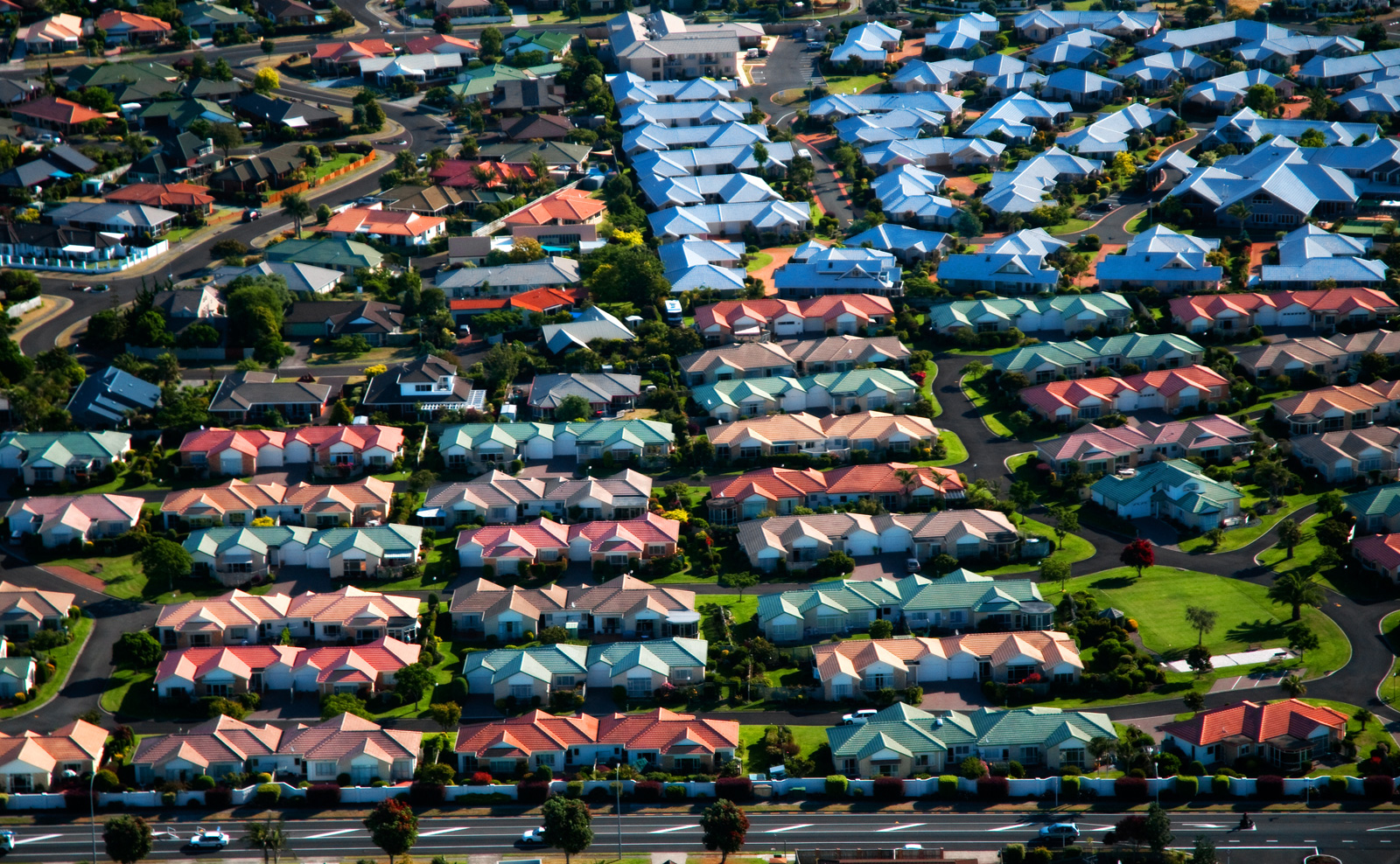 Mount Maunganui is a single storey NZ beach town stretched and sprawled along the Bay of Plenty coastline. This is suburbia par excellent with manicured lawns, SUV bearing streets and toy-town coloured tin roofs. A Wisteria Lane idealised lifestyle of barbecues and beach. Although you can’t quite see the beach because of your neighbour’s house, garage, wife, children… which are a complete facsimilie of your own.
_______________________
——————-||
_______________________
PS: thanks to Rohan’s comment, we recognise (and lament) that Desperate Housewife Urbanism Mount Maunganui used to be Bay Park Raceway:
Thankfully Rotorua’s Paradise Valley is still operational…
Mount Maunganui is a single storey NZ beach town stretched and sprawled along the Bay of Plenty coastline. This is suburbia par excellent with manicured lawns, SUV bearing streets and toy-town coloured tin roofs. A Wisteria Lane idealised lifestyle of barbecues and beach. Although you can’t quite see the beach because of your neighbour’s house, garage, wife, children… which are a complete facsimilie of your own.
_______________________
——————-||
_______________________
PS: thanks to Rohan’s comment, we recognise (and lament) that Desperate Housewife Urbanism Mount Maunganui used to be Bay Park Raceway:
Thankfully Rotorua’s Paradise Valley is still operational…

